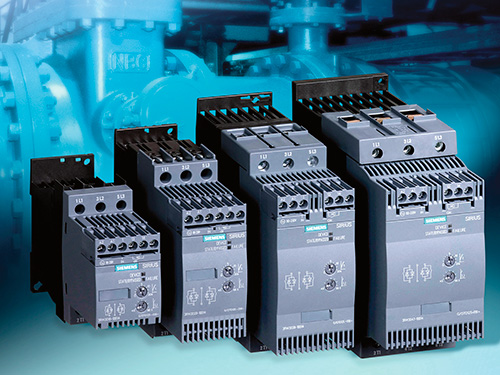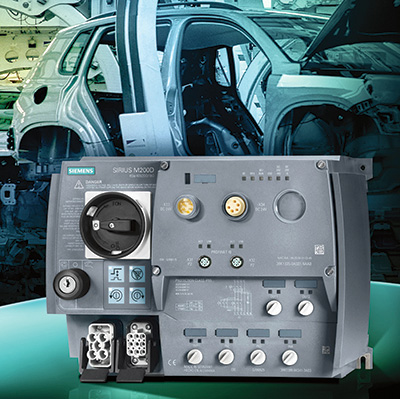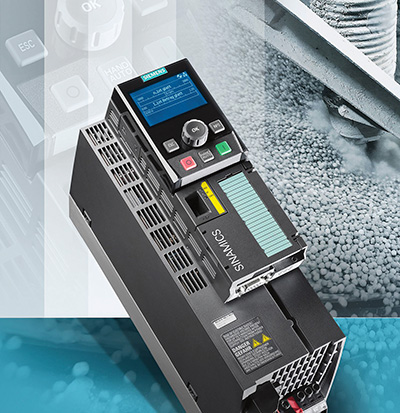Certain topics continue to surface during recent expert discussions on energy efficiency in machines and plants. The topics include variable frequency drives (VFDs) for optimum drive solutions and increasing efficiency in low-voltage induction motors. However, low-voltage controls rarely enter the debate—which is an injustice. Low-voltage controls can increase energy efficiency in three primary ways:
- Enabling the acquisition of measured energy values
- Helping reduce intrinsic power losses
- Providing an optimum drive solution
For machine manufacturers or operators, each of these provides considerable improvement in energy performance figures and leads to the commercial benefits associated with a positive energy balance and better eco credentials.
Acquiring Measured Energy Values
The first of the key steps toward increasing energy efficiency involves acquiring values relating to power flows. Energy management systems cannot perform satisfactorily unless the machines and plants associated with them are analyzed in detail. However, installing additional measuring instruments is not necessary if, during the planning stage, a simple automation system with an integrated current measuring facility and communication interface—such as motor starters with distributed peripheral systems—is incorporated. This simple automation system can transfer the most recent current value to the higher level controller via the communication bus system or an Ethernet automation system.
With a high quality motor protection and control device or a soft starter, it is also possible to acquire and transfer additional measured values—such as voltage and power values. Like the high-feature motor starter, the motor starter with a degree of protection IP65 provides current values in the standard format of the energy profile. This makes integration into energy management systems even simpler.
 Soft starters are a cost-effective alternative to using direct or wye-delta starters for starting three-phase motors, and a soft start in control cabinets can be implemented in almost any application.
Soft starters are a cost-effective alternative to using direct or wye-delta starters for starting three-phase motors, and a soft start in control cabinets can be implemented in almost any application.The measured values of the actuators—which also serve as sensors in this case—can be dragged and dropped into the visualization system for the energy data. The option of evaluating and analyzing measured current values allows energy management systems to assess the situation and shut down individual loads or load groups, if necessary. End users can easily monitor the quarter-hour values that are often used by power supply companies for billing purposes, which can enable them to keep costs as low as possible.
Reducing Power Losses
Each device installed in a control cabinet produces power losses to a greater or lesser extent. For example, devices with integrated power electronics (soft starters) are burdened with higher power losses than power contactors because of their system configuration. Power losses for VFDs are even more significant.
Heat is a sign of these losses. In some applications, installing high-maintenance fans is required. Others use air conditioning equipment that consumes additional energy. The aim should be to create a drive solution that is straightforward.
If a soft starter solution is the answer, however, then using a modern series will make it considerably more economical, because these feature bypass contacts which jumper the power semi-conductors after the run-up stage and keep the resulting heat losses to a minimum. These soft starters can reduce power loss by 90 percent.
Many think that if contactors are used in an application, they can do nothing else to produce savings. Contactors demonstrate exceptionally low power losses compared to soft starters or even VFDs because the heat losses generated by the electromechanical contacts are low.
However, the potential for savings can still be found with the control circuit. In fact, it may be possible to reduce the pull-in current and holding current in conventional AC and DC coils by up to 92 percent by using control electronics, which also offer other benefits:
 To start and protect a motor and other loads, a motor starter can handle both drive and automation tasks without a cabinet.
To start and protect a motor and other loads, a motor starter can handle both drive and automation tasks without a cabinet.- Smaller power supply units needed in the control circuit because of significantly reduced pull-in currents and holding currents
- The option of control with DC voltage or AC voltage
- Wide voltage ranges, enabling less stock keeping
- Control using cost-effective 0.5-amp outputs of the controller
- Integrated protective circuit for preventing overvoltage damage in control electronics
An automation technology company introduced a dedicated range of contactors featuring universal current (UC) coils. These supplement conventional contactors and can be used with the lower power range of up to 25 horsepower.
Since the breakthrough of IEC-compliant fuseless motor starters, most applications in this area include circuit breakers or motor circuit breakers designed for the protection of plants, lines and motors. High pricing pressure on the market restricts these systems to using conventional electromechanical structures. These involve bimetal strips that provide protection against overload but have the drawback of heat losses.
However, the company’s motor starter protectors have managed to reduce these losses by up to 20 percent based on the use of modern materials. One outcome is that it has been possible to increase the maximum current setting range from 25 amps to 40 amps while retaining the same device size (S0 = 45 millimeters width). These devices also consume less energy.
The setting ranges in the company’s motor starter protectors overlap and there is, therefore, a simple tip for saving energy. If users require a circuit breaker for a 15-amp motor, for example, they can use a version with a setting range of either 11 to 16 amps or 14 to 20 amps. Using the larger version and the low overload protection setting that comes with it could reduce intrinsic energy losses by up to an additional 40 percent.
Although fuseless motor starters are becoming more widely used, good reasons still exist to choose overload relays, including:
- Differentiation of the signals for overload and short circuit
- In combination with fuses, extremely high short circuit breaking capacity in high-rated operating voltage ranges
Additional benefits of choosing electronic overload relays instead of their widely used thermal counterparts include:
- Wide setting range for the rated operational current of up to 1:10
- Adjustable trip classes—also suitable for heavy starting
- Remote reset following an overload trip
Regarding energy efficiency, these devices offer exceptional power loss reductions of up to 98 percent. The reason for this improved performance is that the overload relay does not include a bimetallic trip. With compact structures, reduction in intrinsic heat buildup allows for a much simpler air conditioning setup in the control cabinet.
This specific compact starter represents a new class of energy-efficient motor control. It is a compact combination of a circuit breaker, contactor and solid-state overload relay in a single enclosure. By combining these benefits in a single device, intrinsic power loss savings of up to 80 percent can be achieved compared to conventional motor starters.
Consistent use of energy-efficient motor controls switchgear allows significant reductions in the intrinsic losses of the devices and means that fewer heat dissipation measures are required in the control cabinet. This benefits both energy costs and plant availability.
 A drive will offer a high level of integrated safety, energy savings and network connectivity.
A drive will offer a high level of integrated safety, energy savings and network connectivity.Optimum Drive Solution
Three-phase, asynchronous motors are the brawn of a machine and can be operated in different ways. While VFDs are best suited for closed-loop speed control, soft starters specialize in regulating current and torque during startup and runout. In combination with contactor-based motor starters and load feeders, soft starters are cost-optimized for long operating periods at the rated speed of the motors.
In these applications, it is also a good idea to use NEMA Premium Efficiency motors that offer a particularly low level of current consumption during operation and, therefore, bring additional benefits in terms of the energy balance. In this configuration, the products are compliant with the second stage of the European Directive relating to ecodesign (EuP/ErP Lot 11), due to come into force in 2015.
Because more functions mean more power losses in devices, selecting a drive solution with the simplest possible design can lead to savings. This involves optimum sizing for the motor power to prevent the introduction of high losses caused by oversized motors. Adapting an oversized motor to lower requirements retrospectively by using a VFD may not be the right approach.
It also involves choosing simple methods of regulation—the golden rule that the motor that consumes the least amount of energy is one that is not running. With pumps, fans or compressors, combining a cascade VFD and controls (a process often referred to as staging) is a good way to exploit additional potential for savings. While a VFD satisfies the requirements of the variable element of the application, the motor control covers the plant’s basic load requirements. This allows for the best operation of both drive systems—that is, an exceptionally user-friendly control concept on one hand and low intrinsic energy losses with the same high level of efficiency on the other.


